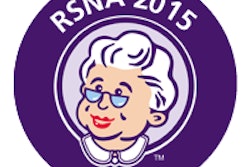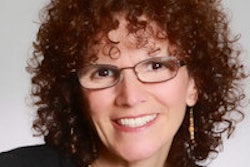
Today's radiologist has to review 16 cross-sectional images per minute, which works out to an image every three to four seconds. That compares to just three images per minute for the average radiologist in 1999, according to a study published online in Academic Radiology. Could the data avalanche eventually compromise patient care?
That's the implication of the new study by researchers from the Mayo Clinic in Rochester, MN, who examined the effect of advances in cross-sectional imaging on the workload of radiologists. They found that radiologists are being forced to interpret a dramatically rising number of images, even as overall imaging utilization remains stable.
"Increasing imaging volumes puts a burden on the practicing radiologist," lead study author Dr. Robert McDonald, PhD, told AuntMinnie.com. "And increased burden can lead to more detection errors."
An onslaught of data
With the steady decline of imaging reimbursements, radiologists have found themselves pressured to compensate by increasing productivity, McDonald and colleagues wrote. But reading more exams also means dealing with more images.
"Much of this increase in workload burden is a result of increases in the number of images that must be interpreted in each examination," they wrote. "Increases in examination content alone have increased the workload of the radiologist between fourfold to sevenfold. ... The clinical impact of these increasing workloads on radiologists remains undefined but may at some point compromise diagnostic accuracy and, in turn, the quality of healthcare delivery."
Why is there such an image onslaught? The past 20 years have seen dramatic technological advances in CT and MR, according to McDonald's team. The detector technology and computing power of CT scanners have skyrocketed, while MR magnets now have higher field strengths, new pulse sequences, and scanning protocols that enable images to be acquired at higher resolution.
"Collectively, such advances have led to greater imaging volumes, as examination datasets can now contain several thousand images because of their anatomic resolution and complexity of study parameters," the group wrote.
At Mayo, daily interpretation duties are assigned to radiologists in modality-specific work assignments, McDonald said. For example, a radiologist will be assigned to read CTs of a particular subspecialty on a given day, but he or she may be assigned a different exam category the next day.
"In some practices, you're responsible for everything on a given day, from chest CT to plain film or ultrasound," he said. "But at our institution, when you're doing CTs, that's all you're doing that day."
For the study, McDonald and colleagues compiled all CT and MR exams that had been performed between 1999 and 2010. A total of 1.5 million cross-sectional imaging studies were performed at Mayo during the time period; these exams totaled 539 million images.
The number of annual cross-sectional studies increased from 84,409 in 1999 to 147,336 in 2010 -- a twofold increase in workload, the authors wrote. Meanwhile, the number of annual cross-sectional images interpreted in the department increased 10-fold, from 9.3 million to 94.3 million (Acad Radiol, July 22, 2015).
| Change per year in radiologist workload, 1999-2010 | |||
| Modality | Median change in exams read | Median change in images interpreted | Median change in images interpreted per work assignment |
| CT | 4,499 | 6.1 million | 214,873 |
| MRI | 2,215 | 2.4 million | 107,145 |
After adjusting for staffing changes in the form of more hires, the number of images requiring interpretation per minute of every workday per staff radiologist increased from three in 1999 to 16 in 2010.
"The average radiologist interpreting CT or MRI examinations must now interpret one image every three to four seconds in an eight-hour workday to meet workload demands," they wrote.
How to cope
How can radiologists cope with all the data? It's a tricky question, McDonald said.
"To be clear, the improvements in CT and MR technology are incredibly valuable -- for example, multidetector-row CT can scan the entire heart in one beat," he told AuntMinnie.com. "And yet we need to work on improving our detection accuracy without burying ourselves in images. We've got to determine the ideal amount of information that will answer the basic clinical question of whether pathology exists."
Imaging has become the central diagnostic tool for clinical diagnosis. It's just that the tool must be used judiciously, according to McDonald.
"We need to be mindful of the fact that as our workload increases, we have to also make sure we're delivering the highest quality study that we can," he said. "You don't want your radiologists burning out."




















